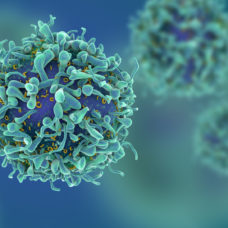Several studies have described hydrogen fuel-cells as an efficient and environmentally-friendly alternative to fossil fuels.
Hydrogen combines with oxygen in a chemical reaction that generates electricity and water as a by-product. However, a catalyst — usually platinum — is required to speed up the reaction.
The problem is platinum is expensive.
Even worse, the transition metal’s high cost is one of the factors hindering the commercialization of hydrogen fuel cells. As a result, commercial catalysts usually consist of tiny nanoparticles of platinum on a cheaper carbon support.
Unfortunately, the material is not durable. So, it significantly reduces the lifetime of the current fuel cells.
Now, a team of researchers from the Queen Mary University of London and University College London has devised a solution.
They suggested that a new graphene material has the right properties to help support fuel cells. These include corrosion resistance, high conductivity, as well as high surface area.
Here’s how the scientists created the new graphene material.
A New Graphene Material for Durable Hydrogen Fuel-Cells
The researchers produced the new graphene material using a unique, scalable technique. After producing the high-quality graphene, the team then decorated it with a platinum nanoparticles in a one-pot synthesis.
According to the researchers, the process can quickly be scaled up for mass production. Furthermore, it could make the graphene-based catalyst a more viable option for widespread energy applications.
In a statement about the project, Professor of Electrochemical Engineering at UCL, Dan Brett said:
“We’ve shown that by using graphene instead of the typical amorphous carbon as a support material, we can create ultra-durable catalysts.”
In a stress test, the scientists showed that the new graphene-based catalyst is more durable than commercial catalysts.
The loss in activity over the same testing period was 30 percent lower in the new catalysts. That means future hydrogen fuel cells would be more stable and power vehicles for a more extended period.
“We hope that this paper can restore faith in graphene and show that this material holds great potential for improving technology, like fuel cells, now and in the future,” said one of the researchers, Dr. Patrick Cullen.



















Comments (0)
Most Recent